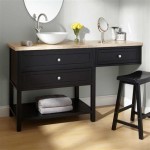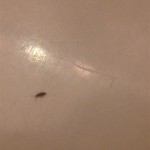How To Install A Washing Machine In Your Bathroom
Installing a washing machine in a bathroom requires careful planning and execution to ensure safe and efficient operation. This process involves considering plumbing connections, electrical requirements, space constraints, and adherence to local building codes. A successful installation will provide the convenience of in-bathroom laundry while mitigating potential risks such as water damage and electrical hazards. This article provides a comprehensive guide for installing a washing machine in a bathroom environment.
Planning and Preparation
Before initiating the installation process, a thorough assessment of the bathroom's suitability for a washing machine is crucial. This involves evaluating the available space, existing plumbing infrastructure, electrical capacity, and compliance with local regulations. Selecting the right type of washing machine, whether front-loading or top-loading, is also a critical decision that impacts space utilization and installation requirements.
Firstly, measure the designated area where the washing machine will be placed. Ensure that there is enough room not only for the appliance itself but also for access during loading, unloading, and maintenance. It is advisable to leave a few inches of clearance on all sides to facilitate airflow and prevent the machine from being cramped. Consider the direction the door will swing if it is a front-loading model, and make sure it will not obstruct any pathways or fixtures.
Secondly, examine the existing plumbing. A washing machine requires both a cold-water supply and a drain line. Check if there are existing cold-water pipes that can be tapped into. If not, a plumber will need to install a new water supply line. Similarly, assess the drain system. Ideally, the washing machine should drain into a standpipe—a vertical pipe specifically designed for washing machine drainage. If a standpipe is not available, the washing machine hose might be connected to a utility sink or other suitable drain, but this might require modifications to the existing plumbing.
Thirdly, evaluate the electrical infrastructure. Washing machines require a dedicated electrical circuit with the correct voltage and amperage as specified by the appliance manufacturer. Check the bathroom's electrical panel to verify that there is a suitable circuit available. If not, a qualified electrician will need to install a new circuit to prevent overloading the existing electrical system. Consider installing a Ground Fault Circuit Interrupter (GFCI) outlet for added safety, as bathrooms are inherently wet environments.
Finally, research local building codes and regulations pertaining to washing machine installations. These codes often specify requirements for plumbing, electrical wiring, and drainage, and they may also dictate the permitted locations for washing machines within a bathroom. Contact the local building department to obtain the necessary permits before starting the installation process to avoid potential fines or legal issues.
Installation Process: Plumbing and Electrical Connections
Once the planning phase is complete, the actual installation process begins. This involves connecting the water supply lines, drain hose, and electrical power. Each connection must be made securely and in accordance with manufacturer instructions and local codes to ensure proper functionality and prevent leaks or electrical hazards.
Turn off the water supply to the bathroom before commencing any plumbing work. This is usually done by closing the main water shutoff valve for the house. Locate the nearest cold-water supply pipe and install a tee fitting. Attach shutoff valves to the tee fitting to allow for individual control of the water supply to the washing machine. Connect the washing machine supply hoses to the shutoff valves, ensuring that the connections are tight and secure.
The drain hose should be connected to either a standpipe or a utility sink drain. If using a standpipe, the hose should extend into the standpipe without being forced or submerged too deeply. The top of the standpipe should be at least 30 inches above the floor to prevent backflow. If connecting to a utility sink drain, ensure that the drain opening is large enough to accommodate the flow of water from the washing machine. Secure the drain hose to the drainpipe using clamps or other appropriate fittings to prevent it from dislodging during operation.
Connect the washing machine power cord to the dedicated electrical outlet. Ensure that the outlet is properly grounded and protected by a GFCI. Avoid using extension cords, as they can be a safety hazard. If the existing outlet is not suitable, have a qualified electrician install a new outlet that meets the washing machine's power requirements. After connecting the electrical power, test the outlet with a circuit tester to verify that it is properly grounded and functioning correctly.
After making all the connections, slowly turn the water supply back on and check for leaks at all connection points. If any leaks are detected, tighten the fittings or replace the seals as necessary. Run the washing machine through a test cycle to ensure that it is filling, washing, draining, and spinning properly. Monitor the washing machine during the test cycle to identify any potential issues such as vibrations, noise, or drainage problems.
Ensuring Proper Operation and Safety
Following the installation, thorough testing and adherence to safety precautions are essential to ensure the washing machine operates efficiently and without posing any risks to the user or the property. Regular maintenance and vigilance are key to prolonging the appliance's lifespan and preventing costly damages.
Leveling the washing machine is vital for reducing vibrations and noise during operation. Use a level to check the appliance's position and adjust the legs until it is perfectly level. Uneven leveling can cause the washing machine to shake excessively, leading to premature wear and tear and potential damage to the surrounding structure. Secure the legs in place after leveling to prevent them from shifting over time.
Periodically inspect the supply hoses and drain hose for signs of wear or damage. Replace them if any cracks, bulges, or leaks are detected. Hoses can deteriorate over time due to water pressure and temperature fluctuations. Burst hoses can cause significant water damage, so it's crucial to replace them proactively. Consider using braided stainless steel hoses for enhanced durability.
Clean the washing machine regularly to prevent the buildup of detergent residue, lint, and mildew. Run an empty wash cycle with a washing machine cleaner or a solution of vinegar and baking soda to remove deposits and odors. Leave the washing machine door ajar after each use to allow air circulation and prevent the growth of mold and mildew. Regularly clean the lint filter to maintain proper drainage and prevent clogs.
Educate all household members on the proper operation and maintenance of the washing machine. Provide instructions on how to load the machine correctly, select the appropriate wash cycles, and use the correct amount of detergent. Emphasize the importance of not overloading the machine, as this can damage the motor and other components. Additionally, post emergency contact information near the washing machine in case of any malfunctions or hazards. This information should include the contact numbers for a plumber, electrician, and local emergency services.
By meticulously planning and executing the installation, meticulously testing the connections, and adhering to safety precautions, one can successfully install a washing machine in the bathroom. This will provide the benefits of in-bathroom laundry convenience while mitigating potential risks and ensuring the longevity of the appliance.

Tips On Adding A Washer Dryer In The Bathroom

How To Position Your Washing Machine Properly

What To Consider Before Installing A Washer Dryer In Bathroom

Diy Portable Washer Magic Chef Install Connect To A Water Supply Line Drain In Bathroom

How To Put The Washing Machine In Bathroom Of 5 Square Meters 35 Design Solutions Super Show Senior

How To Position Your Washing Machine Properly

Laundry Bathroom Combo Work Renovations Balnei Colina

Hooking Up A Haier Washer To Bathroom Sink And Bathtub

Free Advice Bathroom Design Ideas With Washing Machine

Pros And Cons Of A Sink Over Washing Machine 27 Photos In The Interior
Related Posts







